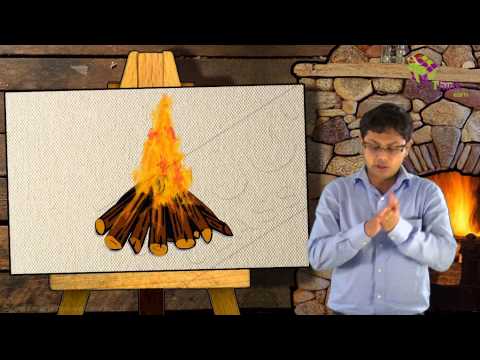
A combustion reaction is a chemical reaction in which a fuel undergoes oxidation by reacting with an oxidising agent, resulting in the release of energy (usually in the form of heat).
Combustion reactions are generally highly exothermic redox reactions between an oxidant and a fuel. The product formed in a combustion reaction is usually the oxidised fuel (which is mostly liberated in the gaseous state). This is often referred to as smoke. It is not uncommon for combustion reactions to be accompanied by flames. However, it is essential to note that not all combustion reactions result in fires.
Solid fuels like coal and wood are known to initially undergo endothermal pyrolysis, resulting in the creation of gaseous fuels. The combustion of these gaseous fuels is known to provide the heat required to drive more combustion. Also, it is not uncommon for combustion to also be sufficiently hot to generate incandescent light in the form of either a flame or some flickering. The transformation of hydrogen and oxygen into water vapour, a process widely used to power rocket engines, can be seen as a simple example of combustion. Here, hydrogen is used as a fuel and oxygen is used as an oxidising agent. This combustion reaction is known to release over 242 kilojoules of heat per mole of fuel subjected to combustion.

Common examples of combustion reactions that are very common in the day to day lives of human beings are provided below.
Apart from these basic combustion reactions, many other such reactions are employed in a wide range of industries. For example, the space industry is known to exploit the combustion reaction between hydrogen and oxygen for the generation of clean energy in rocket ships.
Some important combustion reactions and their chemical equations are listed below.
The combustion of methanol (sometimes referred to as ‘wood alcohol’) involves a chemical reaction between methanol and oxygen. The chemical equation for this reaction is given by:
The combustion reactions undergone by methane are also known to yield water and carbon dioxide as products. This reaction can be represented by the following chemical equation:
The combustion of propane, which is widely employed in cooking setups like fire grills, is represented by the following chemical equation:
Another important combustion reaction involving the oxidation of a hydrocarbon is the combustion of ethane. The chemical equation for the reaction between ethane and oxygen that yields carbon dioxide and water is provided below.
Naphthalene also undergoes combustion in the presence of oxygen to afford carbon dioxide gas and water. The chemical equation for this reaction is given by:
Complete combustion reactions, sometimes referred to as clean combustion reactions, involve the complete oxidation of the fuel (usually a hydrocarbon). Such reactions often liberate only water and carbon dioxide as the products. A common example of a clean combustion reaction is the combustion undergone by wax candles. Wax is a hydrocarbon which undergoes clean combustion to yield only carbon dioxide and small amounts of water as the product. It can also be noted that no ash/byproducts are left behind when the entire candle is burnt out.
Incomplete combustion reactions (sometimes referred to as ‘dirty’ combustion reactions) are the combustion reactions that involve the formation of by-products such as ash and soot. It is not uncommon for such combustion reactions to also liberate carbon monoxide (a highly poisonous gas with the chemical formula CO) as one of the products. A common example of an incomplete combustion reaction is the burning of wood.
A combustion reaction is a kind of chemical reaction in which a reaction between any combustible substance and an oxidiser takes place in order to form an oxidised product. Combustion reactions are often accompanied by fires and the release of energy in the form of heat. In most combustion reactions, a hydrocarbon normally reacts with oxygen to create carbon dioxide and water.
Overall, combustion is an exothermic reaction given off or exiting , which means that energy is released. Usually, heat and light are released during a combustion reaction.
Oxygen supports the chemical processes that occur during fire. When fuel burns, it reacts with oxygen from the surrounding air, releasing heat and generating combustion products (gases, smoke, embers, etc.). This process is known as oxidation.
To learn more about combustion reactions and other important types of chemical reactions such as decomposition reactions, register with BYJU’S and download the mobile application on your smartphone.
Test your knowledge on Combustion Reaction

Put your understanding of this concept to test by answering a few MCQs. Click ‘Start Quiz’ to begin!
Select the correct answer and click on the “Finish” button
Check your score and answers at the end of the quiz
Visit BYJU’S for all Chemistry related queries and study materials
Your result is as below